Welcome to Moda Fabrics!
IQSCM & CFAC - Preservation
IQSCM & CFAC - Preservation
The International Quilt Study Center & Museum in Lincoln, Nebraska. Collection for a Cause ~ Preservation. It's the beginning of a beautiful friendship.
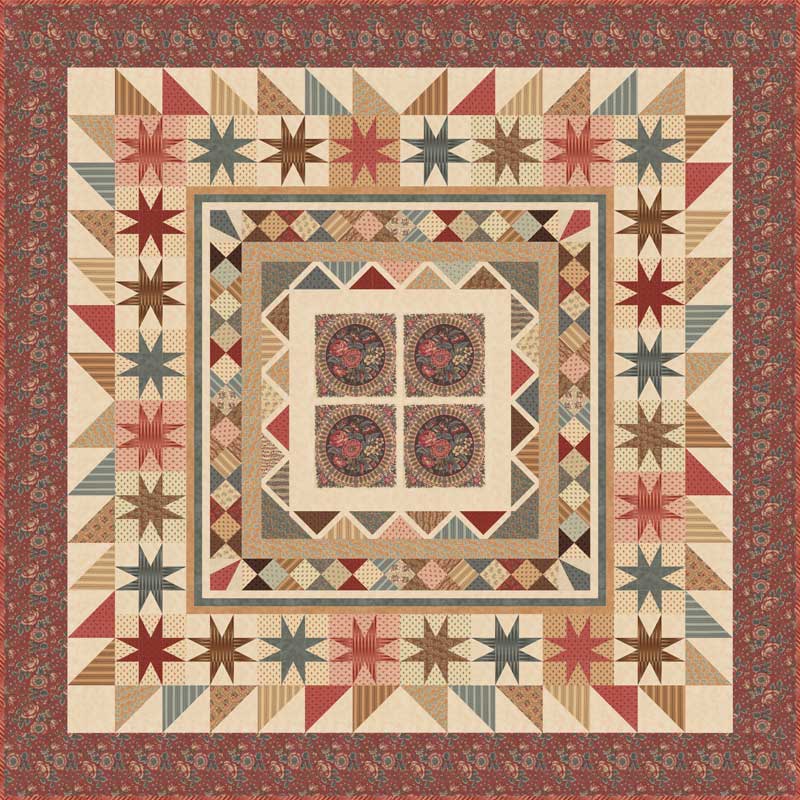
For Howard Marcus Dunn's nineteenth Collection for a Cause - Preservation, he chose to work with the International Quilt Study Center & Museum to re-create a stunning Medallion quilt from their permanent collection. They were joined by Alex Veronelli and Aurifil, who curated a collection of Aurifil thread to coordinate with the Preservation collection.
To celebrate the release of Preservation, Aurifil, the International Quilt Study Center & Museum ~ IQSCM and Moda are having a three-day blog-event.
- Wednesday - August 17 - Auribuzz
- Thursday - August 18 - You're already here.
- Friday - August 19 - IQSCM Quilt Study Blog
I hope you read the Aurifil Blog Auribuzz yesterday, Erin wrote a terrific article about how Aurifil worked with the IQSCM to select the colors and weight for the thread collection. She also wrote about the IQSCM and their mission. Did I mention Aurifil is giving away a very nice prize related to thread and fabric?
This is the original Medallion quilt. It's huge - it measures approx. 112" x 107".
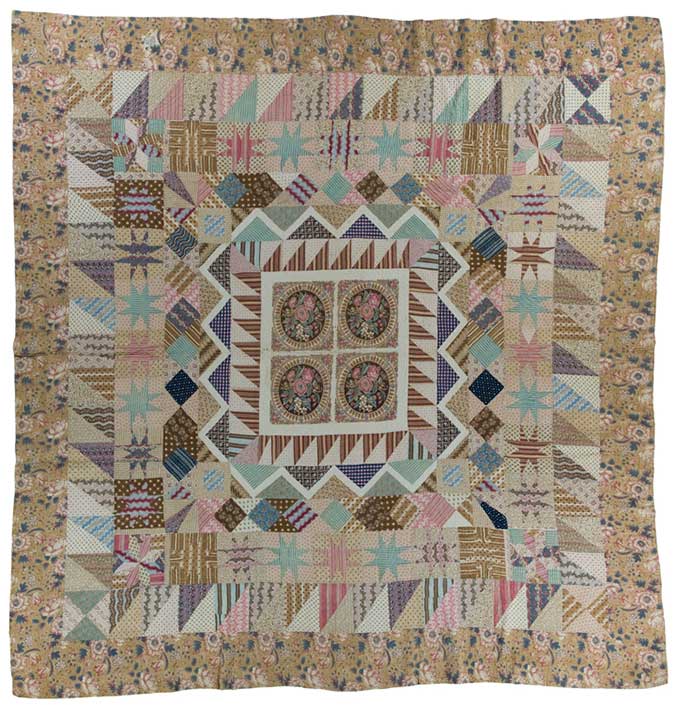
The maker of the original quilt is unknown but it's believed to be from the Allendale region of England, and dates to 1830. While the provenance of the quilt is mostly unknown, Medallion quilts were very popular in England from 1800 to 1850, and the style of quilting design was common in northern England during the same period.
Erin of Aurifil and Laura of the IQSCM asked us a few questions about Collections for a Cause, this collection and this quilt.
How long has Moda been creating Collections for a Cause and what is the driving force behind the initiative?
Giving back. It really is that simple. In 2008, Mr. Dunn created the ongoing series of collections titled Collection for a Cause. There have been eighteen collections since the first - Heritage. Proceeds benefit a variety of charities and causes near-and-dear to Mr. Dunn and the Moda family from the Texas Quilt Museum and Quilt Alliance to the 4-H Clubs of America and Habitat for Humanity, and from Quilts of Valor and the American Red Cross to Gilda's Club and the Libby Lehman Medical Fund.
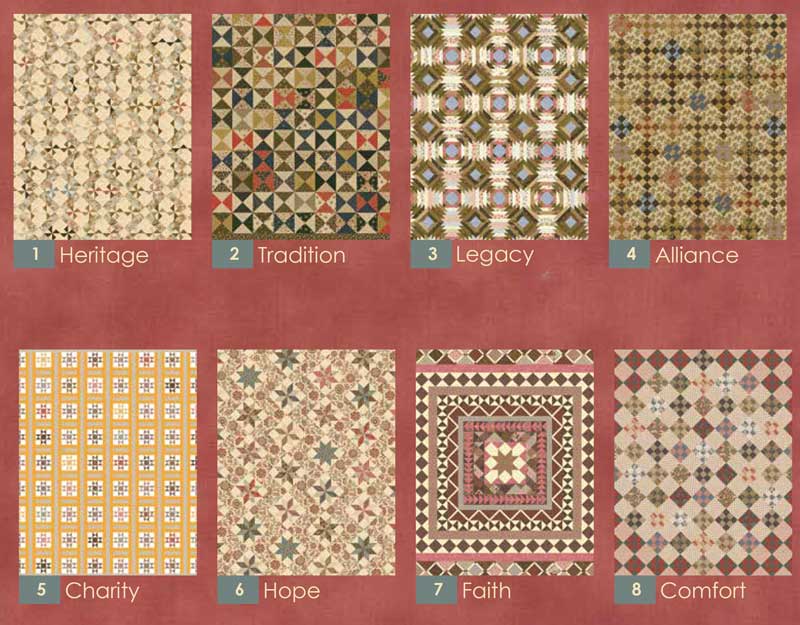
How was it determined that this particular collection would be created in conjunction with, and therefore benefiting, the IQSCM?
As a passionate supporter of organizations and people committed to preserving our rich quilt and textile history, working with the International Quilt Study Center & Museum has long been on Mr. Dunn's "short list" of people he would like to work with. Collaborating on a Collection for a Cause was a way to make that happen.
Selecting the quilt from the IQSCM's collection was a much easier process. While considering the many of the quilts in Study Center's collection, a chance sighting of the English Medallion quilt as it hung in an exhibition was all it took to make it "the one".
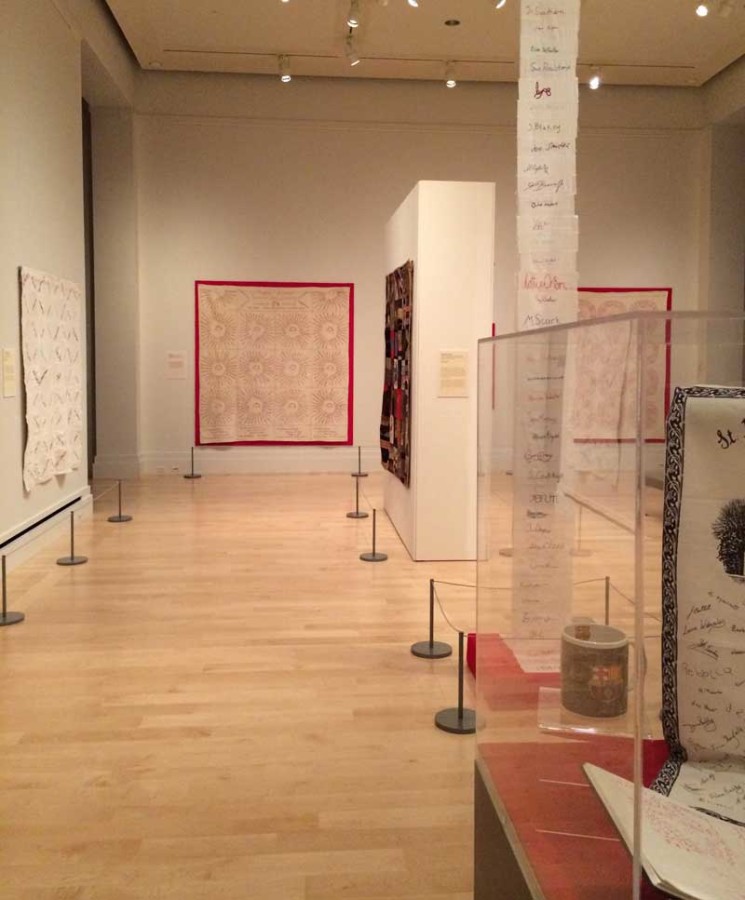
This is one of the gallery areas in the Study Center - circa November 2014, before the expansion and re-model.
What was the process of creating a new collection based on a historical quilt like?
The first thing to be done is to photograph as many of the fabrics in the quilt as possible to document them. Then we go through our collection of antique fabrics and mill books to see if we have samples of those fabrics. Having that allows us to see if there are design elements missing in the pieces in the quilt. and to see the full-scale of a design. It also lets us see if there has been any change in color as the fabrics in the quilt have likely faded.
The photographs and fabrics are then transformed into accurately sized digital images that are sent to the mills where the screens for printing the fabrics are made. Then the process of strike-offs begin.
Strike-offs are test-pieces that allow us to see how the colors, scale and patterns will appear on actual, newly made fabrics. A shade or two off and details of a print can be lost. Some fabrics are approved on the first sample while others might require as many as five or six revisions, and not every print or colorway makes it to the final collection.
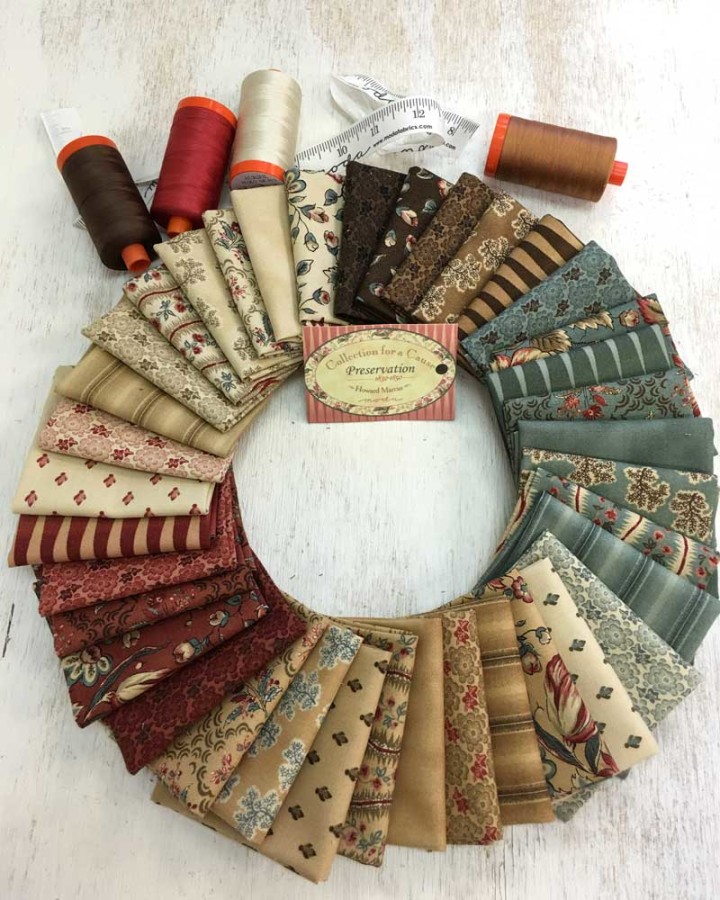
Once the fabrics that will comprise the collection have been selected, the design of the quilt representing the collection begins. That is the work of Susan Stiff - she has designed the quilt and written the pattern for every Collection for a Cause quilt. She's also made several of them. For some quilts, the original antique quilt can be accurately reproduced with only a few small tweaks. Others require a bit more - the goal is always to make the quilt accessible to as many skill levels as possible.
Our third partner in this exciting collaboration is Aurifil. The thread assortment selected to coordinate with the collection is beautiful - Collection for a Cause - Preservation. (They're the threads we included in our picture - we're hoping that because we've opened them, we'll get to keep and use them.)
We asked Alex Veronelli of Aurifil about his association with the IQSCM and he told us, "It was a great pleasure for me to serve on the Advisory Board for three years. During that time, I was fortunate enough to witness the museum's expansion, including the construction of the new building, the extension of the collection and the growth of the services the study center provides. I particularly valued the opportunity to learn more about the history of the quilts, to admire the wonderful works of art and to learn about their preservation while connecting with quilt historians, collectors and artists. In turn, I was able to put my marketing background to use by working to help the IQSCM develop a social business plan relevant to today's vibrant and flourishing quilt industry."
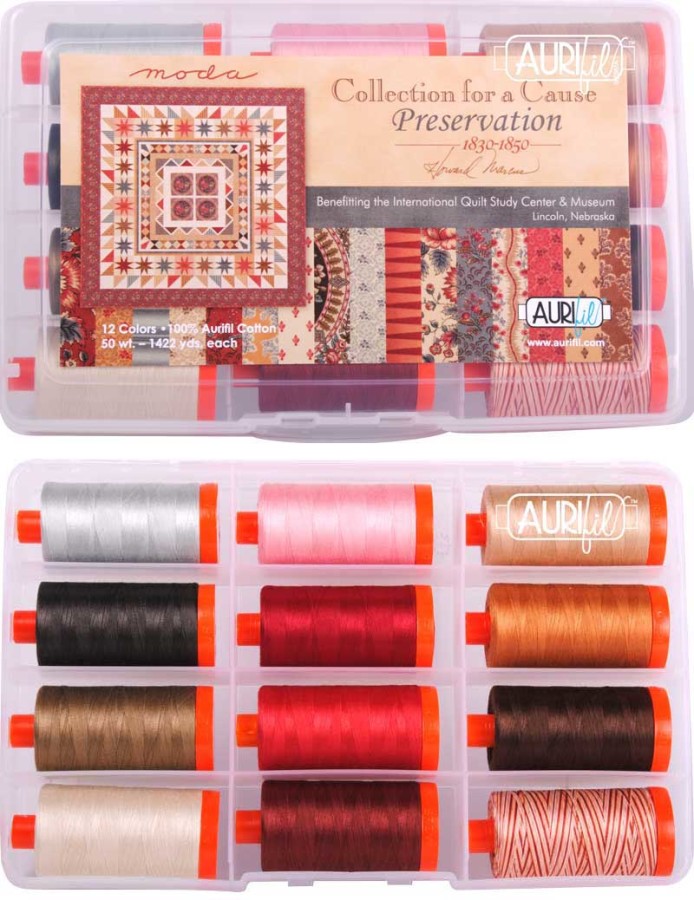
Aurifil and IQSCM - they're wonderful partners to work with. If you've never used Aurifil thread, I recommend giving it a try. I have used the 50 wt. Mako Cotton for more than 10 years... maybe as long as 20. (That's a scary thought.) Color 2324 - the cone. You won't regret it.
The same is true for the International Quilt Study Center & Museum. It isn't a museum in the traditional sense where hundreds of quilts are on permanent display, or even rotating display. The IQSCM is primarily a study center dedicated to collecting, documenting and preserving quilts and textiles that represent every style, type and cultural tradition from around the world. If you can get to Lincoln to see the center and whatever exhibit is on display, it's worth the trip. If you have a group and can plan ahead to arrange a "behind the scenes" tour, it's even more worth the trip. Barring that, their entire collection can be viewed online - it's an extraordinary resource for everyone.
Finally, to celebrate the release of this Collection for a Cause, we're going to share a Fat Quarter bundle of Preservation with one of our readers. To enter, leave a comment by Midnight on Sunday - August 21st - telling us if you have ever used Aurifil thread, been to the International Quilt Study Center or met Mr. Dunn.
I hope many of you can say "yes" to the last option - he's a very nice man.
Happy Thursday!

Comments